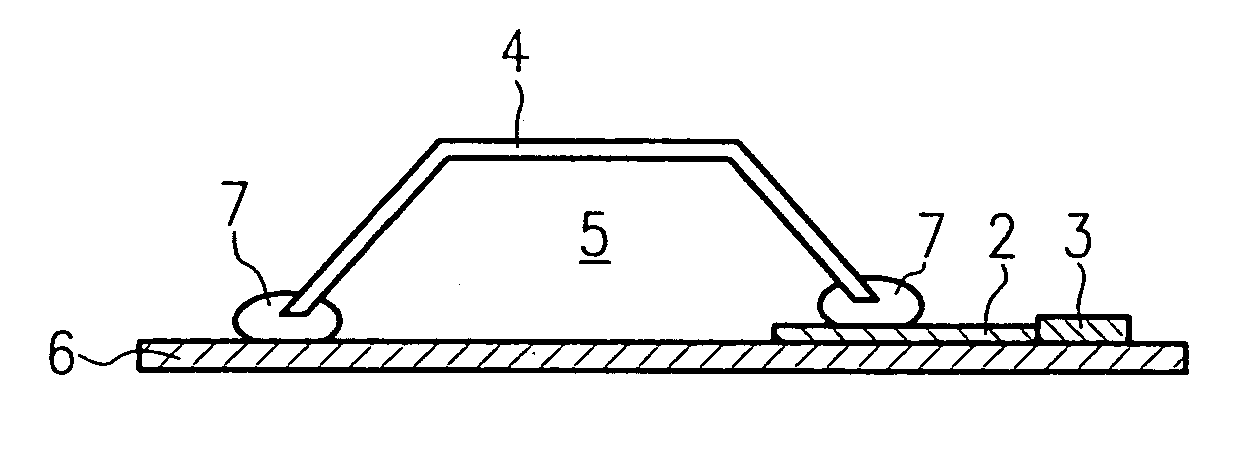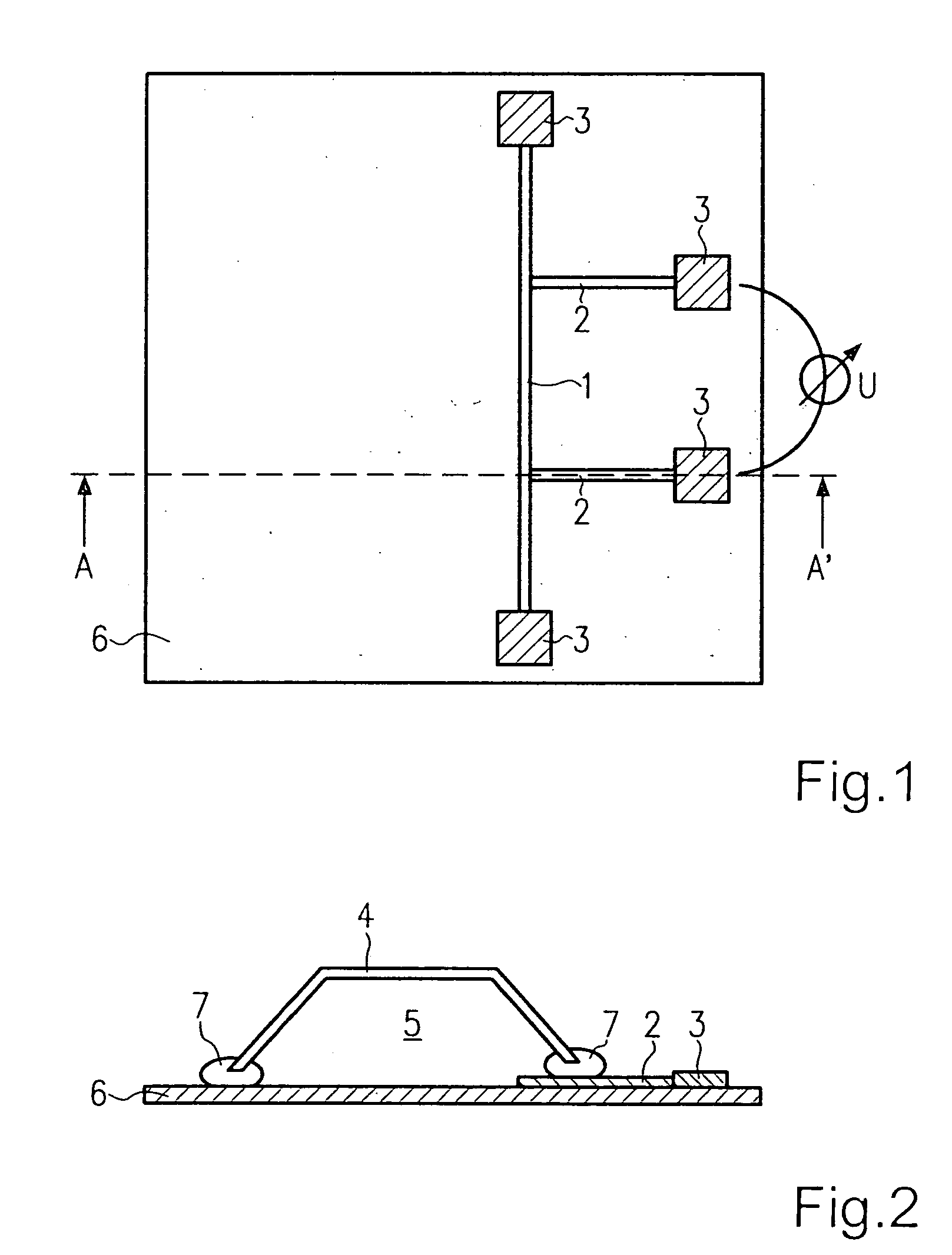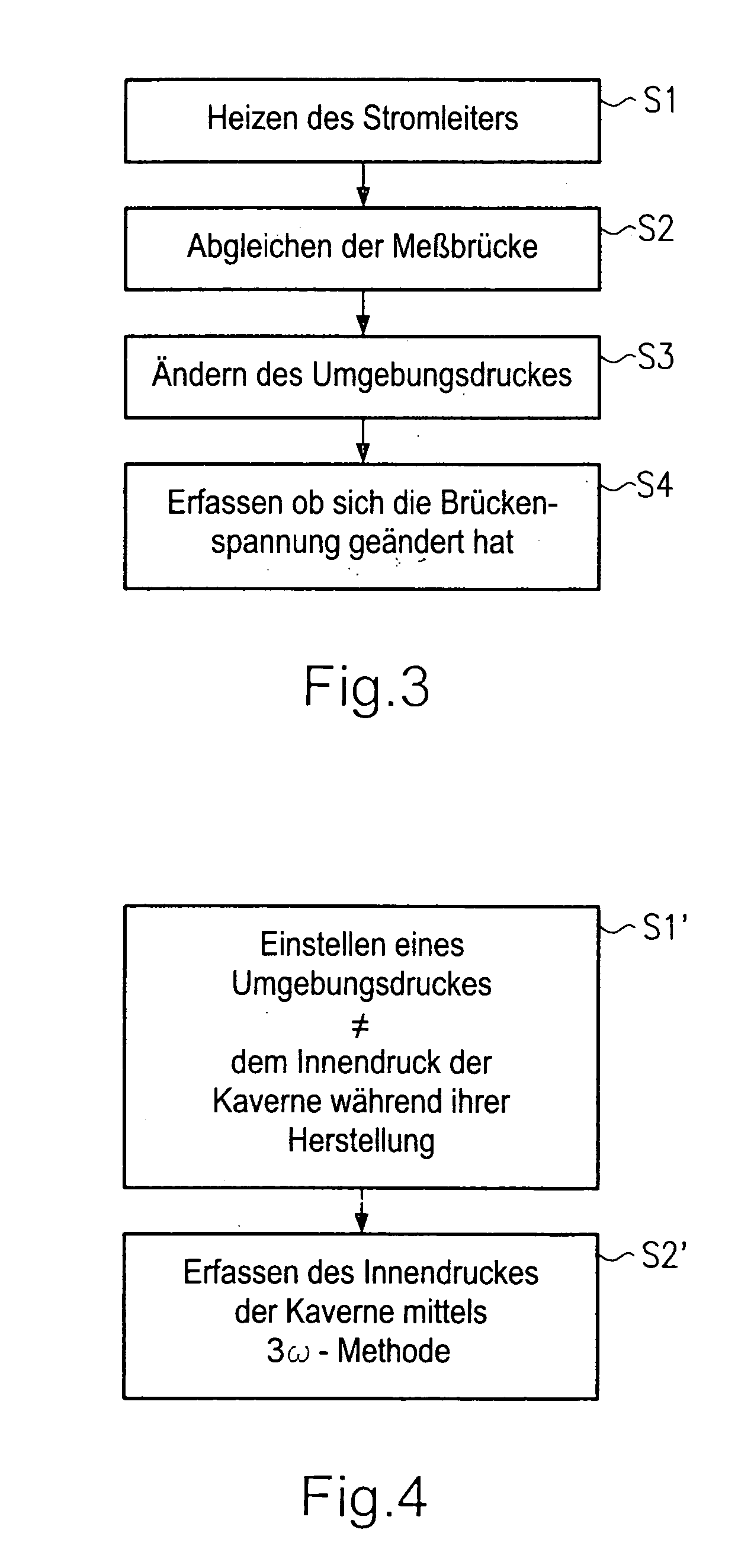Capped microsensor
a microsensor and cap technology, applied in the direction of fluid tightness measurement, simultaneous indication of multiple variables, instruments, etc., can solve the problem of not being able to measure pressure in small cavities without problems, and achieve the effect of cost-effective manufacture and simple manufacturing
- Summary
- Abstract
- Description
- Claims
- Application Information
AI Technical Summary
Benefits of technology
Problems solved by technology
Method used
Image
Examples
Embodiment Construction
[0019] In the following, a capped microsensor according to the present invention is described with reference to FIGS. 1 and 2. FIG. 1 shows a microsensor according to the present invention which is not yet capped, the elements of the actual microsensor not necessary for implementing the present invention not being shown.
[0020] A current conductor 1, which has two voltage taps 2, is applied to a substrate 6 of the microsensor. Contact pads 3 are provided at the ends of current conductor 1 and at the ends of both voltage taps 2. The printed conductors forming current conductor 1, both voltage taps 2, and contact pads 3 may be manufactured using the uppermost metal layer of the microsensor, for example.
[0021] Reference is made to DE 101 23 290 A1, which is included by reference, for the selection of specific materials and in regard to a special configuration of current conductor 1 and voltage taps 2.
[0022] According to the present invention, current conductor 1 and voltage taps 2 li...
PUM
 Login to View More
Login to View More Abstract
Description
Claims
Application Information
 Login to View More
Login to View More - R&D
- Intellectual Property
- Life Sciences
- Materials
- Tech Scout
- Unparalleled Data Quality
- Higher Quality Content
- 60% Fewer Hallucinations
Browse by: Latest US Patents, China's latest patents, Technical Efficacy Thesaurus, Application Domain, Technology Topic, Popular Technical Reports.
© 2025 PatSnap. All rights reserved.Legal|Privacy policy|Modern Slavery Act Transparency Statement|Sitemap|About US| Contact US: help@patsnap.com



